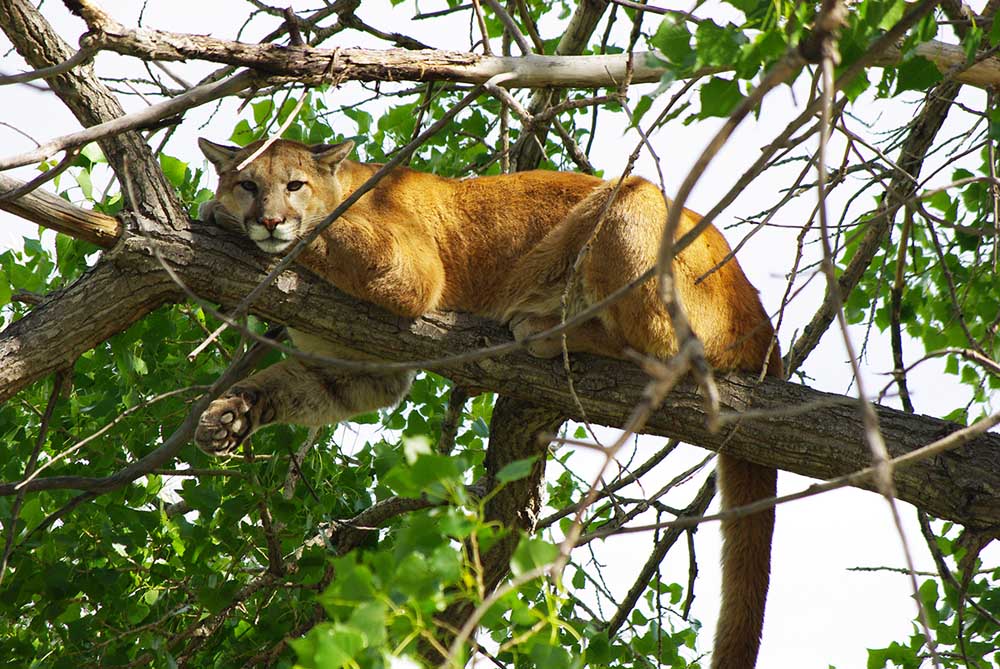Making Tracks: Texas bans canned mountain lion hunts, wants to learn more about species
Published 9:03 pm Friday, July 5, 2024

- The Texas Parks and Wildlife commissioners have moved to ban canned hunts of mountain lions and to put trapping lion regulations more along the lines of other fur-bearers. (Justin Shoemaker/USFWS)
I do not know what it is about mountain lions, but like black bears there is something in us as Texans that makes us want to see one or at least know they are there.
And they are here. Nobody knows how many of the cats exist around the state, but they are firmly entrenched in the Trans Pecos and South Texas regions, and on occasion they make visits to other portions of the state. Four years ago, a 160-pound male was killed in Hunt County.
Unlike black bears that are protected in Texas, mountain lions are fair game for hunters. It is unknown how many are killed annually by hunters or trappers, but apparently there is enough of a market that the Texas Parks and Wildlife Department recently took steps to shut down one unseemly side of it, canned hunts.
“We heard from our Law Enforcement folks, biologists and some landowners out west it was happening. It was putting trapping and hunting in a bad light,” explained Richard Heilbrun, TPWD Wildlife Diversity Program director.
Heilbrun said according to reports some canned hunt operators would tell hunters and trackers to stay prepared for when they were on a lion’s trail. After trapping or purchasing a lion that had been trapped, they would then shoot it in the paw turn it loose and call the hunters and trackers and tell them a hunt was on. Unknowingly, the hunter and trackers thought they were on a fair-chase hunt.
Even though mountain lions are not considered a game animal in Texas, the Parks and Wildlife Commission absolutely banned the practice of canned hunts for the cats by making it illegal to trap them with the intent to hunt.
It then put trapping lions more inline with other fur-bearer regulations by making it illegal to leave a lion in a trap for more than 36 hours. One exemption, done to please coyote trappers is that the 36-hour law does not apply if it is accidently snared in a vertical loop that does not exceed 10 inches.
Heilbrun said there has been little research in Texas on mountain lions over the years, so it is impossible to say what is the state’s population. The issue gets cloudier because a confirmed sighting in an area often brings out more unconfirmed anecdotal sightings that can make it seem like numbers are climbing in an area.
“They did a West Texas lion tracking study, but all but one did not survive the study, and the last one died a month later,” Heilbrun said, explaining one of the difficulties in researching the animals.
He added that South Texas also seems to have a high mortality rate, and that another study in the region looking at health showed potential genetic problems.
“It doesn’t say here is what is going on with lions, it shows potential problems,” Heilbrun said of the South Texas research.
Mountain lions are solitary animals that may travel across 100 square miles in a year in search of food and mates. Heilbrun said that is one reason that makes them more difficult to track than bears.
“Look at the biology of lions. They move more than bears, they are more secretive then bears and have more offsprings. If they have problems, they are going to exist longer than bears,” Heilbrun said.
That makes bear studies cheaper and easier than mountain lions for agencies like TPWD.
“There are a lot more black bear studies than mountain lion studies. They are also easier to track or follow, because they are not legal to shoot,” Heilbrun explained.
When comparing the two, Heilbrun said not only is the biology different, but so is their family dynamics. Bears kick out their young when they have more. Many times, it is the young bears that have been kicked out that find their way into East Texas from Oklahoma, Arkansas and Louisiana.
“Lions keep their cubs two years. Sometimes they kick off their young sooner. Dispersal changes with weather conditions. When there is a lot more drought is when we get more coming from Mexico,” Heilbrun said.
He added the survival of the dispersed offspring depends on what happens when they encounter people.
TPWD is currently working on a management plan for mountain lions in the state, starting with what research needs to be done, and how to do it. The goal is not to change the mountain lion’s status to a game species, but to learn about their numbers in Texas and if they do or do not need protection.
“The important thing we need to find out what is going on with population. If it is healthy and sustainable there is no need for regulation. Are South Texas and West Texas populations any different than any other, and are they self-sustainable?” Heilbrun said.
The biologist said what was clear from vetting processing for the canned hunt and trapping regulations is Texans want mountain lions.
“What I can say is that from all the people we talked to and heard from, everyone wants lions in Texas. Even the producers that have conflicts with lions want lions in Texas. They are native to Texas and a symbol of resilience and durability,” Heilbrun said.






